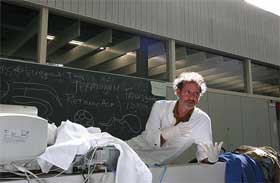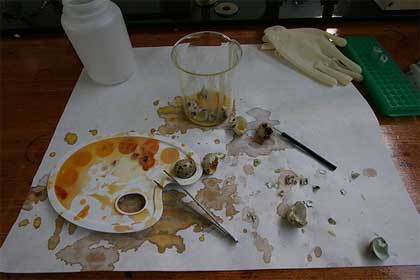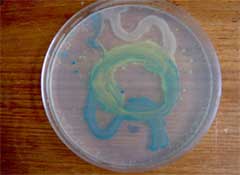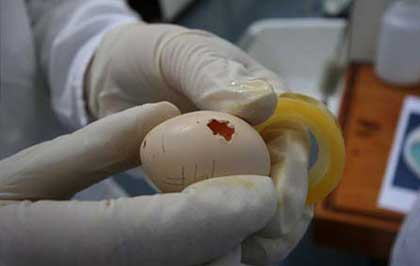 I’m now spending a week in a super boring city. That’s the best way i found to catch up with blogging, writing articles for paper mags and working on my own projects.
I’m now spending a week in a super boring city. That’s the best way i found to catch up with blogging, writing articles for paper mags and working on my own projects.
First long overdue post is about a fantastic guy whose work i’ve been admiring for some time. He’s called Adam Zaretsky and we met in Edinburgh where New Media Scotland had invited us to discuss the Future Body at the Poker Club.
Zaretsky is a teacher and practitioner of VivoArts, an emerging and politically charged field that brings together art and biology. He has been lecturing and doing research in some of the most prestigious institutes around the world and he is currently teaching at the University of Leiden (NL).
His Vivoarts: Biology and Art Studio course explores five areas where art meets biology (Ecology and EcoArt, Gastronomy and Edible Art, Biology and Bio-Art, Ethology and Art for Non-humans, Physiology and Body Art) and discusses cultural issues such as gene patenting, population diversity (he imagines that we could one day create jellyfish people who’d be floating around the city), new reproductive technologies, nature/culture boundaries, etc. The ethics of living art production are debated and made more tangible and understandable by the use of living material/organisms into the class final projects.

A hands-on approach is crucial to him. Adam believes that without getting your hands “dirty” you can’t fully assess the relationship between safety, aesthetics and responsibility implicit in this field. What happens inside a lab is not as squeaky clean as we’d imagine. For example:
The way animals have sex in laboratories is as follows: eggs are squeezed out of the female and put into a petri dish, then the scientist rubs male testicles against the eggs.
 In one of his workshops, Zaretsky has students or participants “paint” with genetically modified bacteria (image on the right); in another, they can incorporate themselves into a work of living art. The idea is to let them see how they can insert their own fantasy and desires right into the genome.
In one of his workshops, Zaretsky has students or participants “paint” with genetically modified bacteria (image on the right); in another, they can incorporate themselves into a work of living art. The idea is to let them see how they can insert their own fantasy and desires right into the genome.
Participants are asked to extract and isolate Hybrid DNA which is found in all living cells. Varieties of samples can be collected from food, pets, pests, human bodies, laboratories and free or not so free living portions of the outdoors. The DNA samples of living, growing, raw or recently alive materials are isolated –using products such as soap, contact lens solution, Woolite– and put in a blender: vegetable, human, animal, fungus, mold, bacteria, dirty underwear or whatever is alive or uncooked.
In his Leyden class he recently had students create transgenic phaesant and quail embryos. Yes, he’s allowed to do that because as he says:
In Europe, yeast has more rights than animal embryos!
The embryos cannot be allowed to live too long nor can they be inserted into a womb. But still, there’s much to learn in the process, like following the development of the embryos and reflecting on the fact that they have no rights (Adam even labelled some eggs with names such as “sub-human”, “non-being”, “loss and lack”, etc.) doesn’t imply that they are not living and growing beings to which one can give an imprint. At the end of the process he has students choose the way they want their embryo to be killed.

I wish i’d have been fast enough to write down every single witty quote from Adam. Explaining how wild future developments might go he mentioned that
“Why should we make golden eggs when you can make prozac come out of a cow? Or have human sperm with opium? Men would then be able to charge a lot for blowjobs!”
Photos from the Transgenic Pheasant Embryology Lab, credits to Jennifer Willet from Bioteknica.
